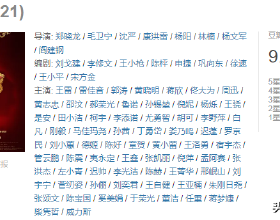編者按:
近年來,人們越來越意識到腸道健康關乎整體健康。與此同時,植物性成分也越來越受到消費者的青睞。那麼,植物性成分與腸道健康之間有什麼關係呢?不同的植物成分都可以被用於解決哪些腸道問題呢?
今天,我們共同關注植物成分。希望本文能夠為相關的產業人士和諸位讀者帶來一些啟發和幫助。
植物成分與腸道健康
在腸道健康狀況不佳的情況下,即使攝入最好的食物和營養補充,人體也無法完全“享受”到營養物質的潛在健康效應。
所以,其實,從本質上講,“胃腸道”涉及整個消化系統,而不僅僅是胃或腸。它始於口腔,止於“臀部”,包括肝臟和膽囊等介於兩者之間的一切,其中的各個組織器官都同等重要。
通常,人們不會想方設法去支援消化系統的正常執行,除非出現問題,例如腹瀉、便秘、脹氣、消化不良或胃酸反流。一些關鍵的植物製劑可為解決這些問題提供有效支援,或者,我們也可以有針對性地製備一些複合製劑。
下面,我們將介紹 5 種植物成分及其對腸道健康的影響。
植物成分1:纖維素
纖維素是膳食的重要組成部分,它有助於消化系統健康,對血糖[1]、體重[2]、心血管[3]健康也有益處。不溶性、可溶性和益生元纖維都是消化系統健康所必需的。
膳食纖維被譽為“結腸的牙刷”,這一稱呼源於它對便秘的有效改善[4]。然而,膳食纖維具有雙向調節作用,它在助力便秘的同時又可緩解腹瀉[5],這歸功於其良好的吸水效能。
植物成分2:洋甘菊
洋甘菊(Matricaria recutita)歷來被用於胃腸疾病,包括消化障礙、肌痙攣、腹絞痛、胃不適、腸胃氣脹、胃潰瘍和胃腸痛等[6]。此外,研究還表明洋甘菊具有改善腹瀉的作用[7]。
植物成分3:朝鮮薊
朝鮮薊(Cynara scolymus)葉提取物有助於減輕功能性消化不良患者的噁心、嘔吐、脹氣和腹痛等症狀[8,9],還可緩解與腸道綜合徵(IBS)相關的腹痛、痙攣、腹脹、腸胃氣脹和便秘問題[10]。
研究表明,朝鮮薊葉提取物最大的效用可能與肝臟健康方面相關,例如對非酒精性脂肪肝(NAFLD)的保護作用[11],朝鮮薊葉提取物還可作為肝臟保護劑,防止肝中毒[12]。
植物成分4:餘甘子
餘甘子(Emblica officinalis)是一種傳統的阿育吠陀草藥。阿育吠陀是印度傳統醫學體系,可以追溯到公元前5000年的吠陀時代,它以世界上最古老的有記載的綜合醫學體系而著稱。
餘甘子除了有助於心血管健康[13]及抗氧化功效[14]外,還具有其他廣闊的應用前景。研究表明,餘甘子可有效改善成人非糜爛性胃食管反流症(GERD)[15],同時,對胃具有保護作用[16]。餘甘子單獨或聯合使用對腹瀉、便秘和消化不良也有好處[17]。
植物成分5:生薑
生薑(Zingiber officinale)對孕期噁心、嘔吐、暈動症以及麻醉影響都有緩解作用[18]。研究表明,生薑還可助消化、提升整體胃腸道功能[18],後者很好地解釋了生薑改善消化不良的原因[19]。
以上只是列舉了部分臨床證實的植物成分,可能有助於為日益廣泛的需求開啟思路,以幫助解決消化健康問題。除此之外,其他一些成分也值得關注,包括但不限於庫拉索蘆薈、水飛薊、解甘草甜素和黃連木等。將這些植物製劑與益生菌結合起來有助於建立全面的消化系統支援方案。
參考文獻:
1.Frati-Munari AC et al.“Decrease in serum lipids, glycemia and body weight by Plantago psyllium in obese and diabetic patients.” Arch Invest Med (Mex). 1983;14(3):259-268.
2.Dehghan P et al.“Inulin controls inflammation and metabolic endotoxemia in women with type 2 diabetes mellitus: a randomized-controlled clinical trial.” Int J Food Sci Nutr. 2014;65(1):117-123.
3.McRae MP.“Dietary Fiber Is Beneficial for the Prevention of Cardiovascular Disease:An Umbrella Review of Meta-analyses.” J Chiropr Med. 2017;16(4):289-299.
4.Collado YL.“Effectiveness of inulin intake on indicators of chronic constipation; a meta-analysis of controlled randomized clinical trials.” Nutr Hosp. 2014;30(2):244-252.
5.Spapen H et al.“Soluble fiber reduces the incidence of diarrhea in septic patients receiving total enteral nutrition: a prospective, double-blind, randomized, and controlled trial.” Clin Nutr. 2001;20:301-305.
6.Kroll U, Cordes C.“Pharmaceutical prerequisites for a multi-target therapy.” Phytomedicine. 2006;13 Suppl 5:12-9.
7.Becker B, Kuhn U, Hardewig-Budny B.“Double-blind, randomized evaluation of clinical efficacy and tolerability of an apple pectin-chamomile extract in children with unspecific diarrhea.”Arzneimittelforschung. 2006;56(6):387-393.
8.Kraft K.“Artichoke leaf extract—recent findings reflecting effects on lipid metabolism, liver, and gastrointestinal tracts.” Phytomedicine. 1997;4:369-378.
9.Marakis G et al.“Artichoke leaf extract reduces mild dyspepsia in an open study.” Phytomedicine. 2002;9:694-699.
10.Walker AF, Middleton RW, Petrowicz O.“Artichoke leaf extract reduces symptoms of irritable bowel syndrome in a post-marketing surveillance study.” Phytother Res. 2001;15:58-61.
11.Panahi Y et al.“Efficacy of artichoke leaf extract in non-alcoholic fatty liver disease: a pilot double-blind, randomized controlled trial.” Phytother Res. 2018;32(7):1382-1387.
12.Mereish KA et al.“Protection against microcystin-LR-induced hepatotoxicity by Silymarin: biochemistry, histopathology, and lethality.” Pharm Res. 1991;8(2):273-277.
13.Gopa B, Bhatt J, Hemavathi KG.“A comparative clinical study of hypolipidemic efficacy of Amla (Emblica officinalis) with 3-hydroxy-3-methylglutaryl-coenzyme-A reductase inhibitor simvastatin.”
Indian J Pharmacol. 2012;44(2):238-242.
14.Kapoor MP et al.“Clinical evaluation of Emblica Officinalis Gatertn (Amla) in healthy human subjects: Health benefits and safety results from a randomized, double-blind, crossover placebo-controlled study.” Contemp Clin Trials Commun. 2019;17:100499.
15.Varnosfaderani SK et al.“Efficacy and safety of Amla (Phyllanthus emblica L.) in non-erosive reflux disease: a double-blind, randomized, placebo-controlled clinical trial.” J Integr Med. 2018;16(2):126-131.
16.Al-Rehaily AJ et al.“Gastroprotective effects of ‘Amla’ Emblica officinalis on in vivo test models in rats.” Phytomedicine. 2002;9(6):515-522.
17.Baliga MS, Dsouza JJ.“Amla (Emblica officinalis Gaertn), a wonder berry in the treatment and prevention of cancer.” Eur J Cancer Prev. 2011;20(3):225-239.
18.Anh NH et al.“Ginger on Human Health:A Comprehensive Systematic Review of 109 Randomized Controlled Trials.” Nutrients. 2020;12(1):157.
19.Hu ML et al.“Effect of ginger on gastric motility and symptoms of functional dyspepsia.” World J Gastroenterol. 2011;17(1):105-110.
原文連結:Natural Products Insider, 2021,11(1):13-14.
作者|David Foreman
編譯|Lina


















